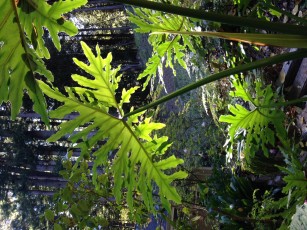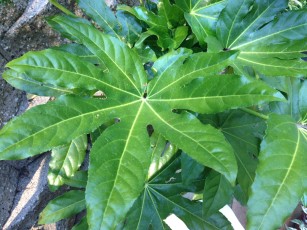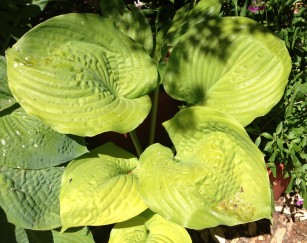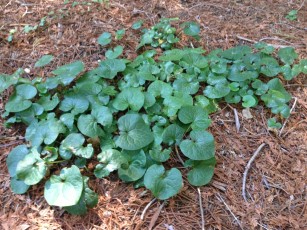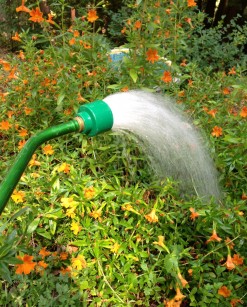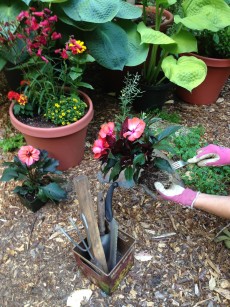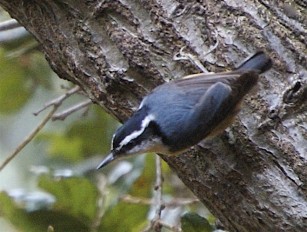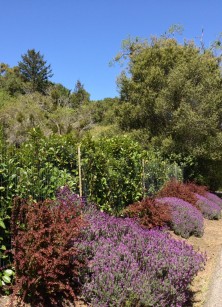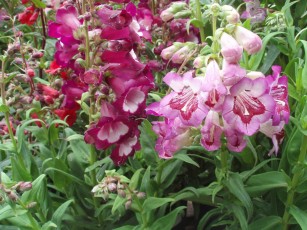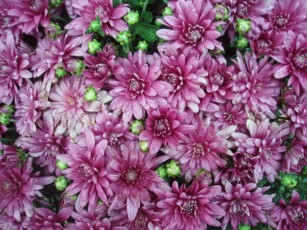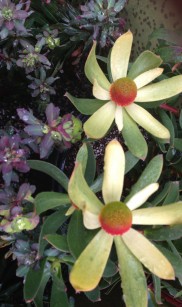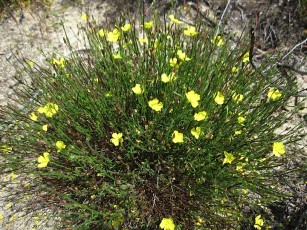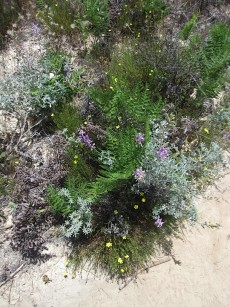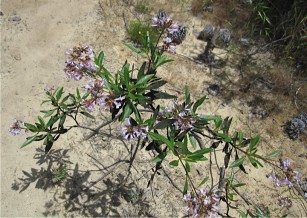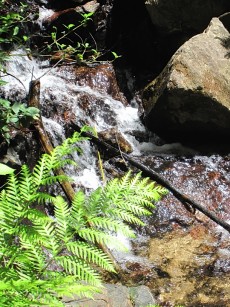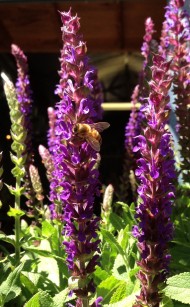 Now that everyone has received a summer water bill or two, it?s hitting home about the need to conserve. I recently received this email which might describe your situation also. ?I let my grass die in this drought and now the area looks awful?Can you recommend a low water, deer proof ground cover?? Sound familiar?
Now that everyone has received a summer water bill or two, it?s hitting home about the need to conserve. I recently received this email which might describe your situation also. ?I let my grass die in this drought and now the area looks awful?Can you recommend a low water, deer proof ground cover?? Sound familiar?
Replacing a traditional lawn with ground covers or other solutions takes a bit of problem solving. Some water districts require you replace 50% of your lawn with hardscape and the other half with approved drought tolerant plants in order to qualify for a rebate. How do you go about designing this to fit your tastes and lifestyle?
If you want to replace the lawn with other ground covers and plants which are the best for our area? Do you want a low ground cover that you can walk on or would low-growing shrubs work for your area? There are also drought tolerant grasses that make good lawn subs. Here are some ideas that you can use in your own landscape.
Those of you with lawns fall into two groups.? Those that need a small recreational space for the kids and 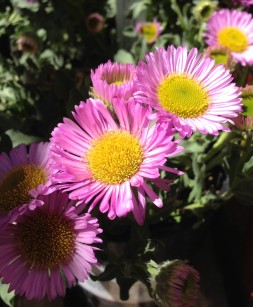 those who don’t. If you’ve been thinking that this is the year to go lawn-free here are some tips.
those who don’t. If you’ve been thinking that this is the year to go lawn-free here are some tips.
After removing the turf, start by looking at your pathways as they become focal points. A curving flagstone path laid down over gravel will allow excess water to soak into the earth rather than run off. Enlarge sitting areas to accommodate a table, chairs and a shade umbrella. Small crushed gravel is affordable and sounds great underfoot as you walk.
Layer plants on berms along your path, arranging low growing varieties like lavender, santolina, teucrium, beach strawberry, salvia nemorosa and creeping rosemary at the base and taller ones like salvia Hot Lips, ornamental grasses and ceanothus at the top if your area is sunny.? Shady gardeners can use tall plants like red-flowering currant with dicentra eximia at the base. Group plants to give them a sense of mass and use different textures and foliage colors for contrast. Make sure the plants you choose will stay the size you envision without much pruning.
Walk-on ground covers like dymondia, lippia, potentilla duchesnea strawberry and several kinds of thyme create the look of lawn but require a fraction of the irrigation.

One of my favorites is Elfin thyme. It doesn’t need mowing, edging, fertilizing or much irrigation. You can walk on it and it stays green all winter, shading into bronze tones when the weather cools. It even blooms in midsummer for several weeks. Bees will be attracted to it at this time. Thyme prefers sun and poor, sandy soil. Autumn is the best time to install from flats cut into 4″ plugs planted about a foot apart. It will fill in within 3 years. Plant them closer together if you’re impatient. You’ll love your new lavender-blooming “lawn”.
There are also Ca. native and prairie meadow grasses that you can walk on. They need little irrigation and even less mowing. Some can be planted from seed, others from plugs or sod. Good choices include Idaho, Calif. and red fescue, carex pansa, June grass and Hall’s bentgrass. Occasional shearing keeps them looking? best but they may be left alone with no mowing at all. Weed control is important during establishment but a healthy stand may be sustained with virtually no weeding after that.
Other meadow grasses to walk on include buffalo grass, catlin sedge and valley meadow 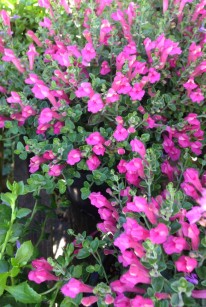 sedge.? All grow 4-8″ tall and can be either left alone or mowed every so often.? They are tough enough for soccer games yet soft enough for bare feet.
sedge.? All grow 4-8″ tall and can be either left alone or mowed every so often.? They are tough enough for soccer games yet soft enough for bare feet.
Scotts Valley Water District has a good list of lawn substitute grasses and other water conserving plants.
If the idea of a flowering meadow right outside your door appeals to you, plant an eco-lawn, a mix of grasses and flowering plants.? Both low water use and low maintenance, an ecology lawn might include flowering perennials like English daisy, Roman chamomile and yarrow interspersed with native grasses.?? Cut this style of lawn every 3 weeks in spring and once during the summer.? This is enough to keep the yarrows from developing woody stems while also allowing the perennials to flower between cuttings.
If you don’t need to walk on your groundcover, low-growing shrubs like baccharis, ceanothus maritimus, cistus salviifolius, grevillea lanigera, creeping mahonia, rosemany prostratus, rubus, manzanita, creeping snowberry and ribes viburnifolium work well and are easy to grow.
Don?t be a slave to your water guzzling grass lawn. You have lots of options to reduce or replace it.

